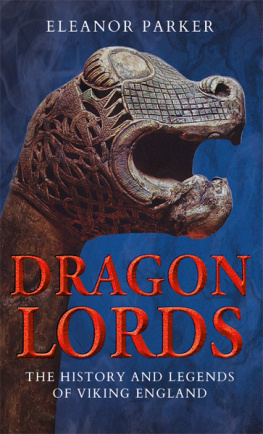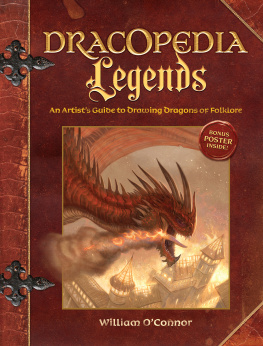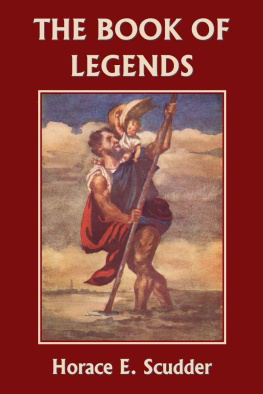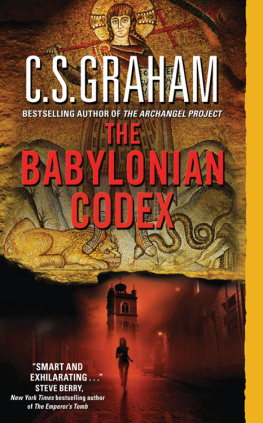Project Gutenberg's The Babylonian Legends of the Creation, by British Museum
Copyright laws are changing all over the world. Be sure to check thecopyright laws for your country before downloading or redistributingthis or any other Project Gutenberg eBook.
This header should be the first thing seen when viewing this ProjectGutenberg file. Please do not remove it. Do not change or edit theheader without written permission.
Please read the "legal small print," and other information about theeBook and Project Gutenberg at the bottom of this file. Included isimportant information about your specific rights and restrictions inhow the file may be used. You can also find out about how to make adonation to Project Gutenberg, and how to get involved.
**Welcome To The World of Free Plain Vanilla Electronic Texts**
**eBooks Readable By Both Humans and By Computers, Since 1971**
*****These eBooks Were Prepared By Thousands of Volunteers!*****
Title: The Babylonian Legends of the Creation
Author: British Museum
Release Date: February, 2006 [EBook #9914][Yes, we are more than one year ahead of schedule][This file was first posted on October 31, 2003][Date last updated: July 21, 2005]
Edition: 10
Language: English
*** START OF THE PROJECT GUTENBERG EBOOK BABYLONIAN LEGENDS ***
Produced by the PG Distributed Proofreaders
THE BABYLONIAN LEGENDS OF THE CREATION
AND THE
FIGHT BETWEEN BEL AND THE DRAGON
TOLD BY ASSYRIAN TABLETS FROM NINEVEH
DISCOVERY OF THE TABLETS.
The baked clay tablets and portions of tablets which describe theviews and beliefs of the Babylonians and Assyrians about the Creationwere discovered by Mr. (later Sir) A.H. Layard, Mormuzd Rassam andGeorge Smith, Assistant in the Department of Oriental Antiquities inthe British Museum. They were found among the ruins of the Palace andLibrary of Ashur-bani-pal (B.C. 668-626) at Kuynjik (Nineveh),between the years 1848 and 1876. Between 1866 and 1870, the great"find" of tablets and fragments, some 20,000 in number, which Rassammade in 1852, was worked through by George Smith, who identified manyof the historical inscriptions of Shalmaneser II, Tiglath-Pileser III,Sargon II, Sennacherib, Esarhaddon, and other kings mentioned in theBible, and several literary compositions of a legendary character,fables, etc. In the course of this work he discovered fragments ofvarious versions of the Babylonian Legend of the Deluge, and portionsof several texts belonging to a work which treated of the beginning ofthings, and of the Creation. In 1870, Rawlinson and Smith notedallusions to the Creation in the important tablet K.63, but the textsof portions of tablets of the Creation Series at that time availablefor study were so fragmentary that it was impossible for thesescholars to find their correct sequence. During the excavations whichSmith carried out at Kuynjik in 1873 and 1874 for the proprietors ofthe Daily Telegraph and the Trustees of the British Museum, hewas, he tells us, fortunate enough to discover "several fragments ofthe Genesis Legends." In January, 1875, he made an exhaustive searchamong the tablets in the British Museum, and in the following March hepublished, in the Daily Telegraph (March 4th), a summary of thecontents of about twenty fragments of the series of tablets describingthe creation of the heavens and the earth. In November of the sameyear he communicated to the Society of Biblical Archaeology [1]copies of:(1) the texts on fragments of the First and Fifth Tabletsof Creation; (2) a text describing the fight between the "Gods andChaos"; and (3) a fragmentary text which, he believed, described theFall of Man. In the following year he published translations of allthe known fragments of the Babylonian Creation Legends in his"Chaldean Account of Genesis" (London, 1876, 8vo, with photographs).In this volume were included translations of the Exploits of Gizdubar(Gilgamish), and some early Babylonian fables and legends of the gods.
[Footnote 1: See the Transactions, Vol. IV, Plates I-VI, London,1876.]
PUBLICATION OF THE CREATION TABLETS.
The publication of the above-mentioned texts and translations provedbeyond all doubt the correctness of Rawlinson's assertion made in1865, that "certain portions of the Babylonian and Assyrian Legends ofthe Creation resembled passages in the early chapters of the Book ofGenesis." During the next twenty years, the Creation texts werecopied and recopied by many Assyriologists, but no publicationappeared in which all the material available for reconstructing theLegend was given in a collected form. In 1898, the Trustees of theBritish Museum ordered the publication of all the Creation textscontained in the Babylonian and Assyrian Collections, and the lateMr. L. W. King, Assistant in the Department of Egyptian and AssyrianAntiquities, was directed to prepare an edition. The exhaustivepreparatory search which he made through the collections of tablets inthe British Museum resulted in the discovery of many unpublishedfragments of the Creation Legends, and in the identification of afragment which, although used by George Smith, had been lost sight offor about twenty-five years. He ascertained also that, according tothe Ninevite scribes, the Tablets of the Creation Series were seven innumber, and what several versions of the Legend of the Creation, theworks of Babylonian and Assyrian editors of different periods, musthave existed in early Mesopotamian Libraries. King's edition of theCreation Texts appeared in "Cuneiform Texts from Babylonian Tablets inthe British Museum," Part XIII, London, 1901. As the scope of thiswork did not permit the inclusion of his translations, and commentaryand notes, he published these in a private work entitled, "The SevenTablets of Creation, or the Babylonian and Assyrian Legends concerningthe creation of the world and of mankind," London, 1902, 8vo. Asupplementary volume contained much new material which had been foundby him since the appearance of the official edition of the texts, andin fact doubled the number of Creation Texts known hitherto.
[Illustration: Babylonian map of the world, showing the oceansurrounding the world and making the position of Babylon on theEuphrates as its centre. It shows also the mountains as the source ofthe river, the land of Assyria, Bt-Iakinu, and the swamps at themouth of the Euphrates. [No. 92,687.]]
THE OBJECT OF THE BABYLONIAN LEGEND OF THE CREATION.
A perusal of the texts of the Seven Tablets of Creation, which Kingwas enabled, through the information contained in them, to arrange forthe first time in their proper sequence, shows that the main object ofthe Legend was the glorification of the god Marduk, the son of Ea(Enki), as the conqueror of the dragon Timat, and not the narrationof the story of the creation of the heavens, and earth and man. TheCreation properly speaking, is only mentioned as an exploit of Mardukin the Sixth Tablet, and the Seventh Tablet is devoted wholly to theenumeration of the honorific titles of Marduk. It is probable thatevery great city in Babylonia, whilst accepting the general form ofthe Creation Legend, made the greatest of its local gods the hero ofit. It has long been surmised that the prominence of Marduk in theLegend was due to the political importance of the city of Babylon. Andwe now know from the fragments of tablets which have been excavated inrecent years by German Assyriologists at Kal'at Sharkt (or Shargat,or Shar'at), that in the city of Ashur, the god Ashur, the nationalgod of Assyria, actually occupied in texts[1] of the Legend in usethere the position which Marduk held in four of the Legends current inBabylonia. There is reason for thinking that the original hero of theLegend was Enlil (Bel), the great god of Nippur (the Nafar, or Nufarof the Arab writers), and that when Babylon rose into power under theFirst Dynasty (about B.C. 2300), his position in the Legend wasusurped at Babylon by Marduk.
Next page










